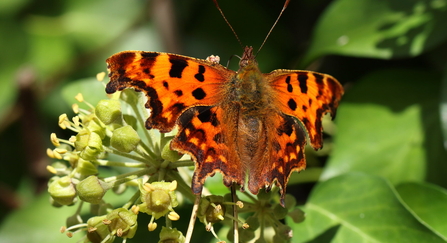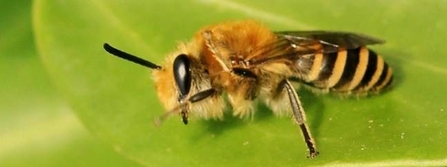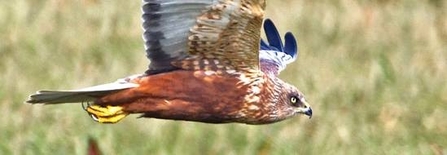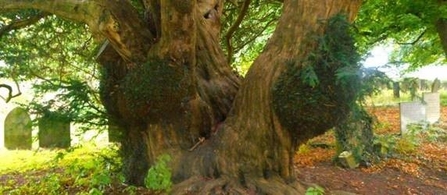Ivy draws them in!
Ivy is now in flower, providing vital food for all manner of insects including butterflies, wasps, hoverflies and many bees. On a walk over 15 red admirals and 2 commas were seen feeding on ivy flowering along an old railway track.
Wild Update - Late September 2023
Coed Crafnant rainforest © Ben Porter

Vaughn Matthews
Among the bees is an exciting newcomer to the county. I turned to our inhouse Hymenopteran specialist Kieron Huston who writes:
“The Ivy Bee (Colletes hederae) was first observed in Dorset in 2001, reaching Derbyshire about six years ago.
It was only recognised as a species in 1993 being very similar to two other species in the same genus. However, locality and the species of flower visited are useful ways to separate them.

Kieron Huston
The ivy bee has a very late flight period (early September to mid November) with males emerging ten or more days ahead of the females.
This bee nests in dense aggregations in lawns, grasslands, and farmland on light, often south-facing, soils .
Ivy bees mainly visit ivy flowers where they can get both nectar and pollen, but other flowers are visited.
This species continues to spread north, reaching Scotland in 2021. In Derbyshire it is widespread in the south and east and continues to spread into the Peak District.
A word of caution: when identifying the ivy bee, take care to rule out the rather similar honeybee which also visit ivy flowers.
The ivy bee has bright orange-buff hairs on the top of the thorax (the segment behind the head) and a series of broad buff abdominal bands.
It is usually possible to see 4 or 5 of these bands.
The honeybee (see attached) has orange abdominal bands but usually only three are visible. It also has pollen baskets on its hind tibia”.
Willington Wonderland
While beavers rightly make the headlines, this reserve, close to the River Trent, continues to attract a marvelous array of birds. Here are just a few of the many species seen this week:
Marsh harrier, barn owl, great white egret, cattle egrets (4 now), kingfisher, water rail, teal, little grebe, snipe, Cetti's warbler, lapwings, shoveler and gadwall. No doubt there were bitterns too, hiding in the reed beds.

Peter Beeley
Marsh harrier sightings are becoming more frequent and I gather a pair is now nesting in Nottinghamshire. Hopefully there’ll be a pair in the Trent Valley before long…..
Harvest people?
Often confused with spiders (especially with the ‘daddy longlegs’ spider), harvestmen appear at this time of the year as they reach peak numbers.
Their eight incredibly long legs show them to be arachnids not insects. Most are predators, some are scavengers. There are 25 species in the UK but they are hard to identify.
Berry abundant
I walked past this lovely veteran yew in a local churchyard yesterday. It might be 1000 years old.
Despite its great age it was covered in red fruit and soon the ‘Viking hoards’ as well as our local blackbirds and thrushes will be plundering them. More on the tree, its poisonous fruit (which are not strictly berries) and its avian invaders next time.

Nick Brown
Remember if you see anything whilst you're out and about this Autumn, please do let us know through the Derbyshire Biological Records Centre webpage: here
